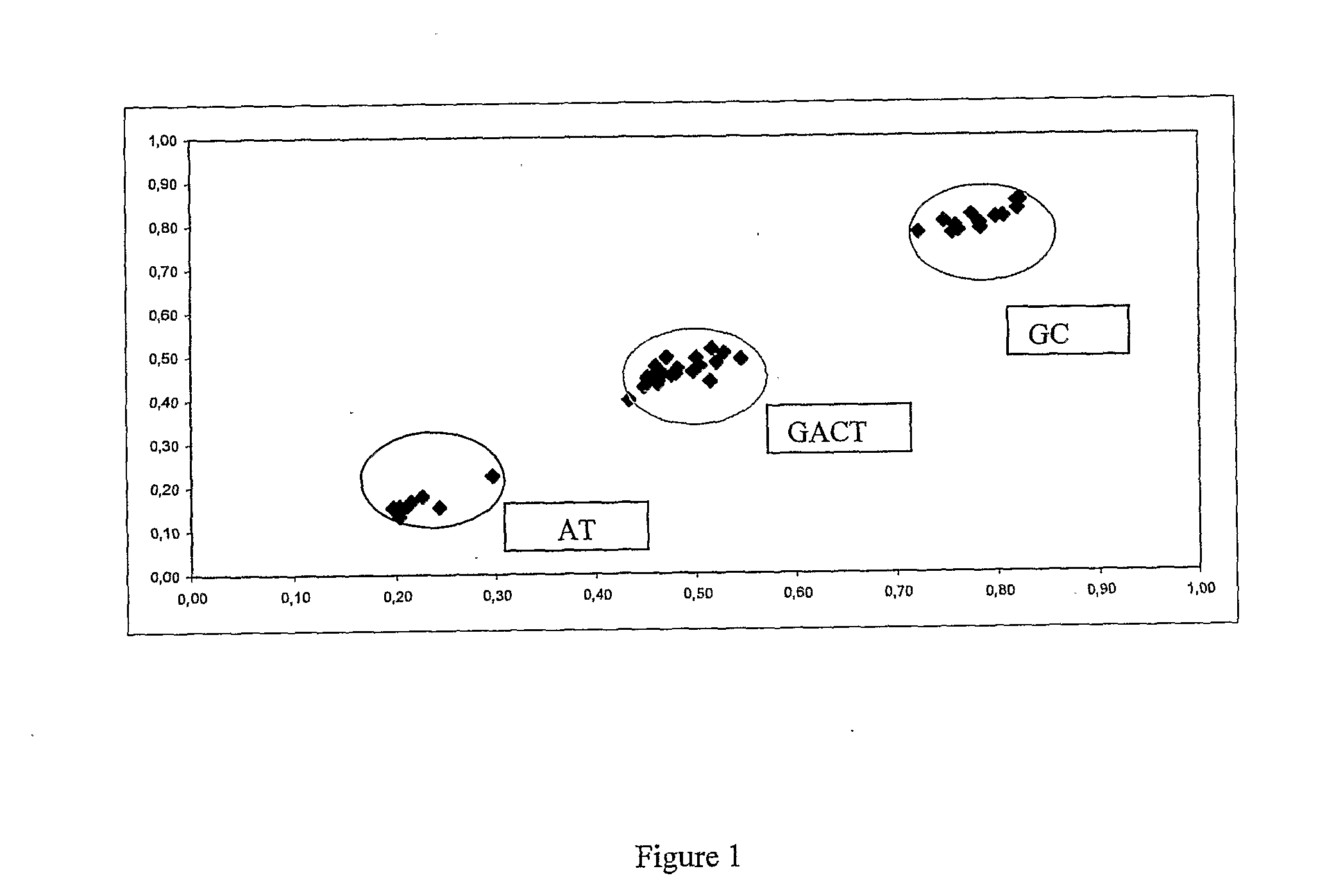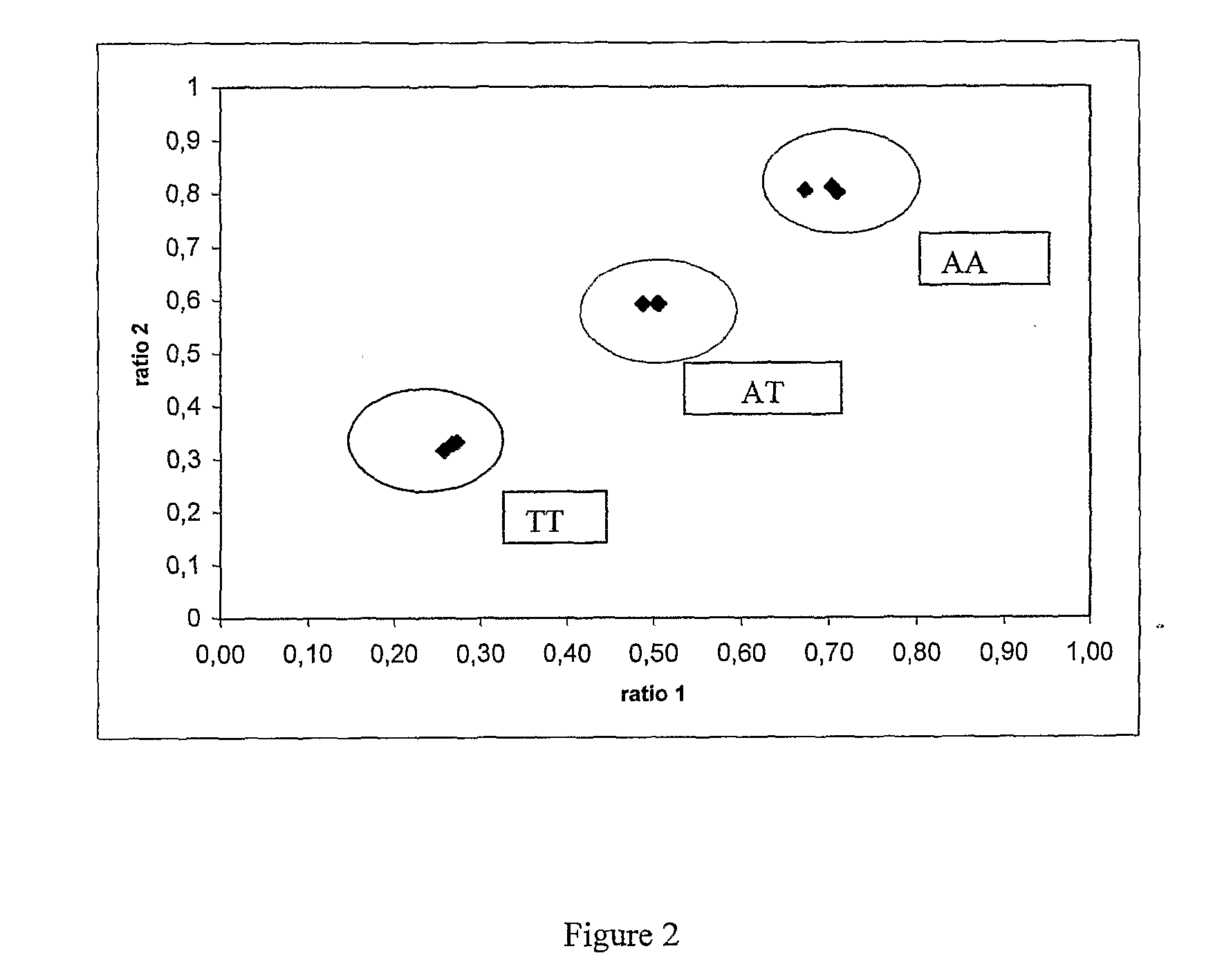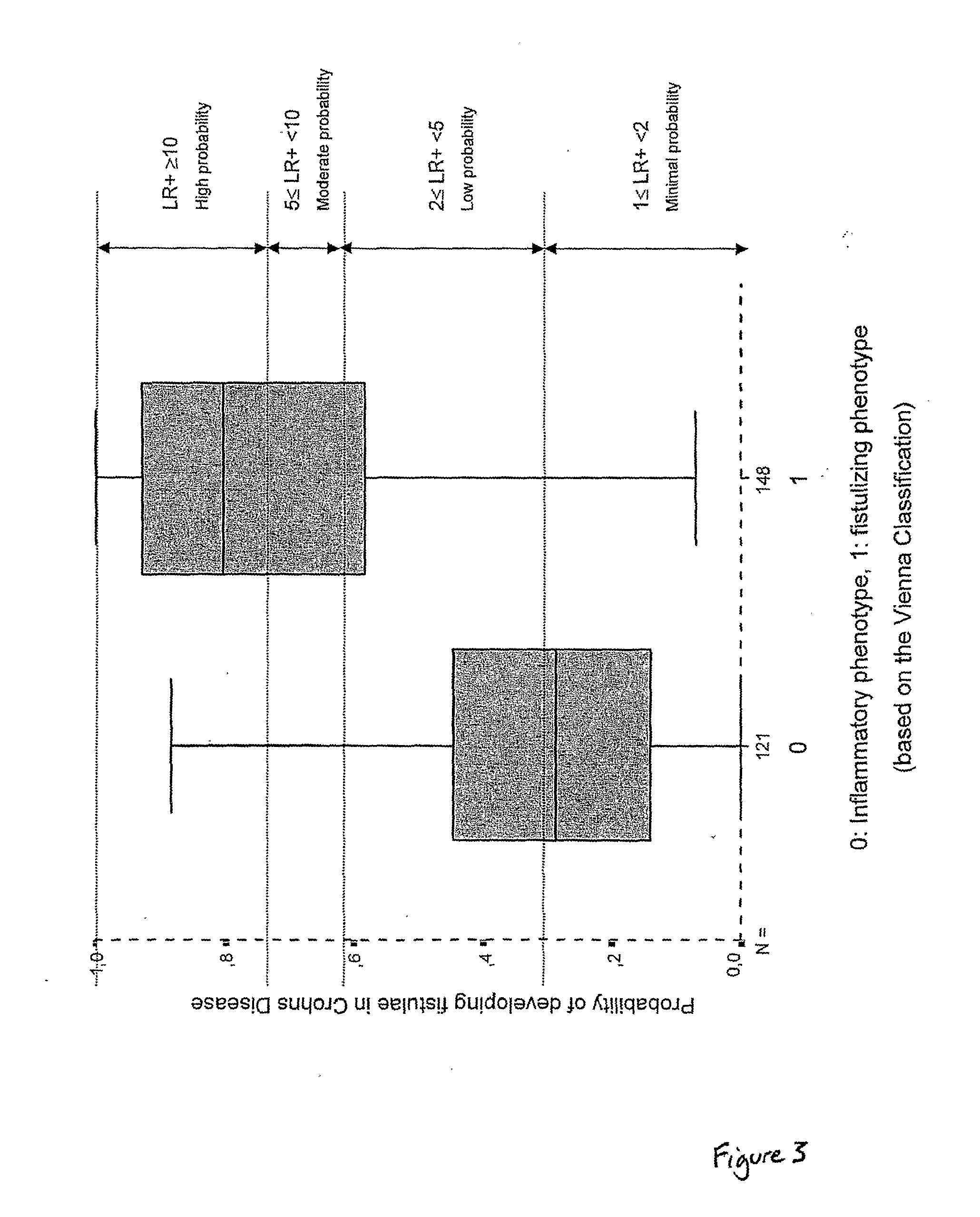Methods and products for in vitro genotyping
a genotyping and in vitro technology, applied in the field of in vitro genotyping methods and products, can solve the problems of inability to identify the exact change in the sequence using this method, disadvantages of on-chip extension/amplification methods compared to differential hybridization based methods, and the need for amplification and purification reactions, so as to achieve high specificity and reproducibility, the effect of high sensitivity
- Summary
- Abstract
- Description
- Claims
- Application Information
AI Technical Summary
Benefits of technology
Problems solved by technology
Method used
Image
Examples
example 1
Detection of Human Genetic Variations Associated with Human Erythrocyte Antigens, Using a DNA-Chip for the Identification of Human Blood Groups
[0395] 1.1 Design of the DNA-Chip for Genotyping Blood Groups
[0396] A DNA-chip was designed and produced to detect human genetic variations associated with several erythrocyte antigens, which permits the simultaneous, sensitive, specific and reproducible detection of the genetic variations. Illustrative examples of the variations which can be determined using the DNA-chip are listed in Table 2.
[0397] In this case, the DNA-chip designed and produced consists of a support (a glass slide), which comprises a plurality of probes on its surface, which permit the detection of the genetic variations. These probes are capable of hybridizing with (amplified) target gene sequences that encode the erythrocyte antigens to be studied. The DNA sequences of the probes used are listed below. In general, the name of the gene, the mutation (nucleotide change...
example 2
Identification of the Blood Group of 15 Individual Blood Donors, Using the DNA-Chip for the Genotyping of Blood Groups
[0427] 2.1 DNA Extraction
[0428] DNA was extracted from 15 blood donors who responded to serological groups A and 0 by conventional methods. Genetic analysis by sequencing of the region of interest confirmed that 5 of the donors had genotype 188G189C (serological determination A), another 5 donors had genotype 188GA189CT (serological determination 0) and the remaining 5 188A189T (serological determination 0)
[0429] 2.2 Probe Design
[0430] 4 probes were designed for the detection of the polymorphism ABO G188A / C189T genotype ABO O1v as previously described (Example 1):
BC012OV01ACCATCTGCAGCGCGTCTCGTTGCC25SEQ IDNO:299BC012OV02ACCATCTGCAGCATGTCTCGTTGCC25SEQ IDNO:300BC012OV03CCATCTGCAGCGCGTCTCGTTGC23SEQ IDNO:301BC012OV04CCATCTGCAGCATGTCTCGTTGC23SEQ IDNO:302
[0431] 2.3 Production of the DNA Chip for the Detection of Human Genetic Variations Associated with Determined Huma...
example 3
Detection of Human Genetic Variations Associated with Inflammatory Bowel Disease (IBD), Using a DNA-Chip for the Diagnosis, Prognosis and Prediction of Response to Treatment of IBD
[0447] 3.1 Design of the DNA-Chip for Genotyping of Genetic Variations Associated with IBD
[0448] A DNA-chip which permits the simultaneous, sensitive, specific and reproducible detection of human genetic variations associated with IBD was designed and manufactured. The genetic variations are related to a greater or lesser risk of suffering from IBD, a better or worse response to treatment and also a better or worse prognosis of the disease. Table 1 lists illustrative examples of human genetic variations associated with BED which can be determined using this DNA-chip.
[0449] The DNA-chip designed and produced consists of a support (glass slide) which comprises a plurality of probes on its surface that permit the detection of the genetic variations. These probes are capable of hybridizing with the (amplifi...
PUM
 Login to View More
Login to View More Abstract
Description
Claims
Application Information
 Login to View More
Login to View More - R&D
- Intellectual Property
- Life Sciences
- Materials
- Tech Scout
- Unparalleled Data Quality
- Higher Quality Content
- 60% Fewer Hallucinations
Browse by: Latest US Patents, China's latest patents, Technical Efficacy Thesaurus, Application Domain, Technology Topic, Popular Technical Reports.
© 2025 PatSnap. All rights reserved.Legal|Privacy policy|Modern Slavery Act Transparency Statement|Sitemap|About US| Contact US: help@patsnap.com



